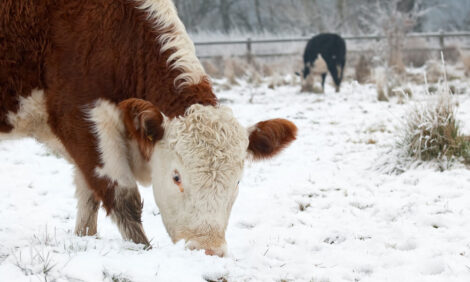



La Niña Now Set to Impact Global Weather
GLOBAL - Experts from the Inter-American Institute for Cooperation on Agriculture predict that by the second half of this year it is very likely that climate phenomenon "La Niña" will develop.The phenomenon is likely to have an impact on food production in Central America and the Dominican Republic.
The dry conditions that occurred in 2014 and the phenomenon of "El Niño", which since early 2015 affected this region largely with drought, is weakening and the transition to "La Niña" has a high probability of arising, according to reports issued by the National Oceanic and Atmospheric Agency (NOAA) in the US.
"La Niña" is associated with heavy rains, floods, landslides, mudslides and involvement infrastructure for the Central American region. In addition, it is related to more active hurricane seasons, which would have serious implications for the regional agricultural sector.
In a Web seminar given by the experts, the main threats and challenges that face agriculture caused by the phenomenon were exposed.
Impact on agriculture
Coffee production, for example, has been favoured by dry conditions that have prevailed in recent years that have helped the plants combat rust diseases, however moisture, characteristic of "La Niña", would encourage crop damage and consequent low productivity.
Countries such as Costa Rica, Guatemala, Panama and the Dominican Republic will face rainfall above normal, which in some cases could affect banana and plantain during the first phase of the rainy season.
"It is recommended to producers and other stakeholders in maintaining a fluid and constant communication with national meteorological services, especially in key moments such as the preparation and planting sector. Maintenance of drains as planned action is one of the main recommendations," said a specialist Ligia Cordoba.
From the climatic point of view, the current year is compared with 1998, in which a transition such as the one anticipated for 2016 also happened.
The seminar also featured a CIIFEN specialist , Eduardo Zambrano, who made a presentation on the transition from "El Niño" to "La Niña" and its influence on climate in the Andean countries.
"It is estimated that in May and July will be a greater chance of rain above normal in the northeastern region of Colombia, in the Orinoco, southeastern South America, central Chile, Uruguay, Paraguay and northern Argentina. Rainfall below normal in the Caribbean region, northeastern Brazil and northern Chile," Mr Zambrano said.
TheCattleSite News Desk


